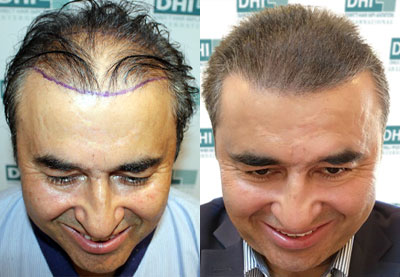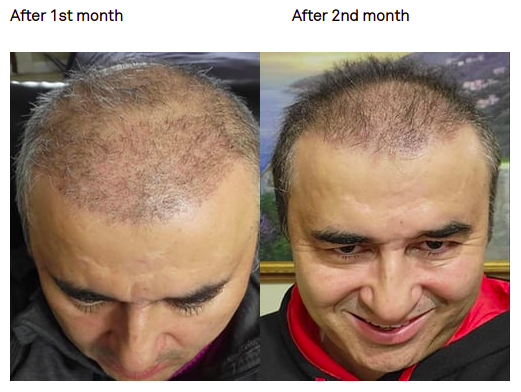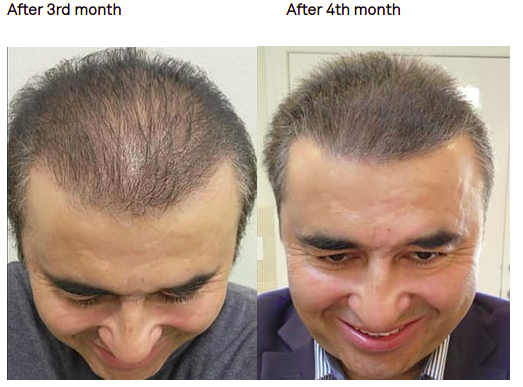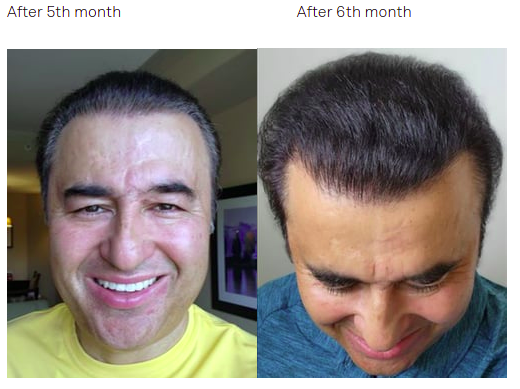How Long Does Hair Take to Grow After a Hair Transplant?

Unlike other cosmetic procedures, hair restoration requires a certain amount of time before the results start kicking in. The benefits of undergoing a specialized hair transplant are immense. Our experts in the field have helped thousands of patients achieve satisfying results.
While undergoing this procedure, it’s also significantly important for clients to manage their expectations. Medical hair restoration is not an overnight process. You will have to wait a little while before you see the implanted hair showing signs of natural growth.
But the question still prevails – how long does it take for hair to grow after a successful hair implant procedure? The answer to this question is relatively straightforward, but it also depends on a lot of external factors.
Usually, the timeline for recovery is pretty standard for such procedures, and you will see improved results in a couple of months.
Factors Affecting Hair Growth?
Multiple factors affect and influence the recovery trajectory and hair growth progression following a hair transplant procedure. Some of the most common ones are:
- Patient’s Profile: The biological sex and age of the patient are two primary factors that affect the pattern of their hair growth. If the patient is older, the recovery process will be slower compared to younger clients. Similarly, the patient’s sex can also influence hair growth. Higher levels of testosterone, for instance, can result in quicker hair growth.
- Genetics: Some patients have a genetic predisposition to slow or limited hair growth, which can impact the results of Direct Hair Implantation (DHI).
- Health and Nutrition: A healthy body with good nutrition intake is more likely to have better hair growth. The recovery process of such individuals will be faster compared to patients with underlying health conditions or sketchy dietary habits.
- Post-Operative Care: To quicken the results of DHI, our doctors and experts chart out an excellent post-operative care regime. If the patients follow the instructions of their doctors, they can avoid potential complications and realize their hair growth goals faster.
- Medications: Hair growth patterns are averse to certain prescriptions like blood thinners or immunosuppressants. As such, patients should fully disclose their current medication regimes with their hair restoration expert before they undergo any sort of hair implant treatment.
- Stress: Chronic stress is one of the main reasons behind slow or negative hair growth. Following the procedure, patients should avoid stress for as long as possible and practice relaxation techniques to recover quickly.
Apart from these primary factors, there are some other triggers that might influence the speed of your hair growth following a transplant:
- Hydration
- Hormones
- Scalp Health
- Quality of Sleep
- Vitamins and Supplements
- Environmental Damage
- Deficiencies
- Exposure to Heat
- Scalp and Hair Oils
- Breakage
- Ingredients Applied on Hair
How Long Does It Take to Grow Hair?
With all things considered, you should go into a hair transplant procedure with the mind to wait for a few months to start seeing noticeable results on your scalp. Usually, it will take around 8-12 months for you to see the end product of the hair implant treatment.
Some people start seeing slight hair growth on their scalp after 3-4 months following the initial procedure. From the 6th month onwards, hair growth is rapid if you follow your doctor’s instructions and focus on post-operative care. By the end of one year of your hair implant treatment, you will have a head full of hair.
Surprisingly, it does not stop here. Between 10 and 18 months from the procedure, the hair will show further signs of growth and improvement in strength, texture, and thickness.
While the recovery timeline might vary for different clients, here’s a run-down of what to expect after undergoing a hair restoration treatment:
0-3 Months: The “Dormant Shock” Phase
The first couple of months following the procedure are the hardest. Your implanted hair will not grow during this phase. Moreover, some of them will actually fall out.
You will start noticing that some of the transplanted follicles are shedding after around 4-5 days following the treatment. Fortunately, this is normal, and you don’t have to worry about anything.

3-4 Months: Initial Growth Signs
After the rowdy “dormant shock” phase, you’ll notice some of the implanted hair follicles starting to thrive. This stage starts right around the beginning or the end of the third month following the procedure.

The early hair growth might not be impressive – the strands might appear thin and curly. Moreover, the area where hair follicles were transplanted might appear patchy as hair growth is scarcely uniform in nature.
These symptoms are completely normal. It will take time before the results start looking aesthetically pleasing.
5-6 Months: Fast Hair Growth
At this stage, you will be rewarded for your patience. Clients can expect to see exciting, fast, and healthy hair growth from the fourth or fifth month following the procedure. Your hair will start filling in nicely, and all the patchy spots will be replenished evenly.

6-12 Months: Hair Maturity
Between the 6th and the 12th month, your implanted hair will achieve maximum bust. As your hair growth pattern progresses, the implanted follicles will start looking more and more natural.
Around 50% of the expected hair growth takes place at this juncture. By the end of the first year following your procedure, you are likely to have a head full of lush implanted hair.
12-18 Months: Subtle Growth
The recovery process does not stop at the end of the first year. The next stage of growth will be more subtle.
Your hair strands will get thicker and stronger. They will improve in their texture and look more naturally pleasing.
At the end of this period, nobody would be able to differentiate between your natural hair and the implanted hair.
How To Maintain Long Hair?
Our state-of-the-art Direct Hair Implantation technique is long-hair friendly. Clients don’t have to shave off their heads prior to the procedure.
We understand the love people hold for long hair. Fortunately, you can aspire to grow your hair to any length of your preference following our DHI treatment.
Here are a few tips for maintaining your long hair and keeping them lush and healthy:
- Shampoo and condition your hair regularly with sulfate-free products to keep it clean and moisturized.
- Using a wide-tooth comb can avoid hair shedding that occurs due to tugging or pulling.
- Limit the use of styling tools like flat irons, curling irons, and blow dryers. Protect your hair from the sun as well.
- Prevent split ends by getting regular trims after every 6-8 weeks.
Conclusion
So, how long does it take for hair to grow after an implant treatment? Now, you’re well-equipped to answer this age-old question.
Remember that a primary contributing factor to the recovery process is the type of treatment used as well as the post-operative measures taken.
Our experts use the proprietary Direct Hair Implantation technique, which facilitates faster hair growth by minimizing scarring, ensuring a higher graft survival rate, and ensuring proper post-operative protocols.
Want to experience a hassle-free hair restoration process devoid of any complications? Do get in touch with our experts to book a session now!
This content is written by DHI Content team and medically reviewed by Dr. Kuntal Deb Barma
